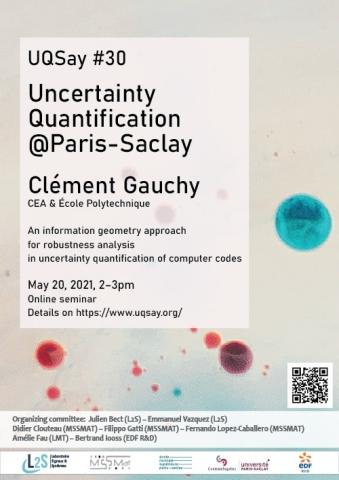
An information geometry approach for robustness analysis in uncertainty quantification of computer codes
Robustness analysis is an emerging field in the uncertainty quantification domain. It involves analyzing the response of a computer model—which has inputs whose exact values are unknown—to the perturbation of one or several of its input distributions. Practical robustness analysis methods therefore require a coherent methodology for perturbing distributions; we present here one such rigorous method, based on the Fisher distance on manifolds of probability distributions. Further, we provide a numerical method to calculate perturbed densities in practice which comes from Lagrangian mechanics and involves solving a system of ordinary differential equations. The method introduced for perturbations is then used to compute quantile-related robustness indices. We illustrate these "perturbed-law based" indices on several numerical models. We also apply our methods to an industrial setting: the simulation of a loss of coolant accident in a nuclear reactor, where several dozen of the model's physical parameters are not known exactly, and where limited knowledge on their distributions is available.
En ligne / onlineRobustness analysis is an emerging field in the uncertainty quantification domain. It involves analyzing the response of a computer model—which has inputs whose exact values are unknown—to the perturbation of one or several of its input distributions. Practical robustness analysis methods therefore require a coherent methodology for perturbing distributions; we present here one such rigorous method, based on the Fisher distance on manifolds of probability distributions. Further, we provide a numerical method to calculate perturbed densities in practice which comes from Lagrangian mechanics and involves solving a system of ordinary differential equations. The method introduced for perturbations is then used to compute quantile-related robustness indices. We illustrate these "perturbed-law based" indices on several numerical models. We also apply our methods to an industrial setting: the simulation of a loss of coolant accident in a nuclear reactor, where several dozen of the model's physical parameters are not known exactly, and where limited knowledge on their distributions is available.
